Local Heroes 2014
The Santa Barbara Independent's Annual Celebration of Good People

During the Thanksgiving week of 1986, The Santa Barbara Independent published its first issue ever, a roundup of the good-hearted and hardworking people that make the Santa Barbara community thrive. Every year since, we’ve continued that tradition, shining a bright light on those folks who’ve dedicated their time to improving the lives of others. Nearly 30 years later, we’ve yet to run out of Local Heroes — indeed, the hardest task of the year is whittling the list down — and we proudly present this year’s roundup to you to enjoy during this week of giving thanks.
Cameron Stewart: Taking Care of Those with Special Needs
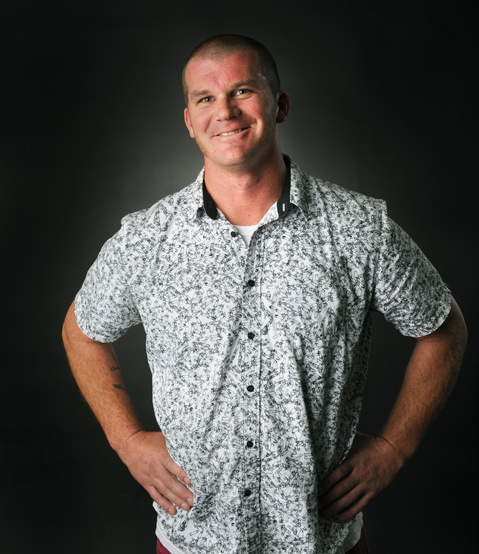
Cameron Stewart is a big kid with a huge heart — only, he’s not a kid. He’s a 35-year-old man who was born and raised in Santa Barbara. He dedicates seven days a week to caring for kids and adults who have special needs.
Cameron was an aid in the school district for 12 years before recently taking a teaching position at Goleta Valley Junior High School, where he has a class of 12 students who are moderately to severely disabled. Cameron has a unique way with all of his students; a parent recently called him to take her child home from the hospital because she knew Cameron’s presence would be beneficial. “They are no different from you or me,” Cameron said of his 12- and 13-year-old students — his favorite age because they are grown up enough but not as busy as teenagers.
After the bell rings, Cameron works at STAR Autism, where he spends the afternoon hours with his client, going to the market or helping around the house. On the weekends, Cameron participates in Challenger Sports league, which offers football in the fall and baseball in the spring for children with disabilities.
In addition to his professional life, Cameron recently moved back in with his father, who is suffering from advanced Alzheimer’s. “He could easily be living the bachelor lifestyle,” said his sister, Susan, who added that she has never had a close relationship with her brother. “That doesn’t matter. He still does amazing things.”
Allison & Rodney Gustafson: Santa Barbara’s Dance Ambassadors
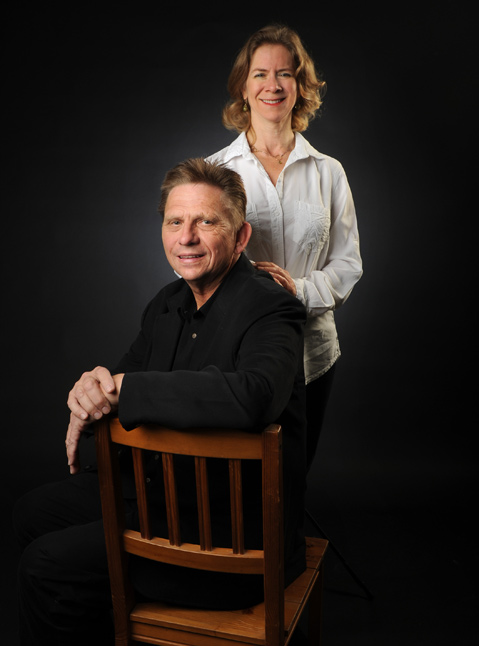
For the past 20 years, Allison and Rodney Gustafson have stood as beacons of hope for the Santa Barbara dance community. As the guiding forces behind Gustafson Dance and State Street Ballet, they’re doing much more than facilitating dancers — they’re injecting culture into the pockets of our community that need it most. Since migrating to Santa Barbara from Tuscon, Arizona, in 1994, the Gustafsons have fostered an outlook that many wouldn’t necessarily associate with the so-called “fine art world.”
“Originally, I had a design for the company where I wanted to bring high-quality dance to smaller cities and underserved communities,” said Rodney.
“I’ve always felt like dance is something that everyone should get to do if they wanted to,” added Allison, “and that, first and foremost, children dancing should be having fun.”
Though Rodney came up in the classical American Ballet Theatre, dancing alongside luminaries like Mikhail Baryshnikov, George Balanchine, and Rudolph Nureyev, his direction of State Street Ballet’s 14-member company operates on a far more contemporary, collaborative, and egalitarian level. But it’s the duo’s ever-expanding list of outreach efforts that makes them heroes beyond the confines of the dance world. Currently, State Street Ballet is averaging five tours per year, as well as working with the Santa Barbara Symphony and Opera Santa Barbara, conducting residencies in schools, theaters, and dance studios throughout the county, appearing in numerous free community events, and offering complimentary and reduced-price tickets to almost every overlooked, underserved community under the sun.
For the Gustafsons, getting people in the door to experience dance is not just a business model; it’s a personal credo. “I experienced my first ballet performance when I was 14 years old,” recalled Rodney. “I got dragged into a performance of the Joffrey Ballet, and after that I started my career. It was really a single exposure to the arts that inspired enough to discover my life’s passion.”
Karen Lee Stevens: For the Love of Dogs and Reading
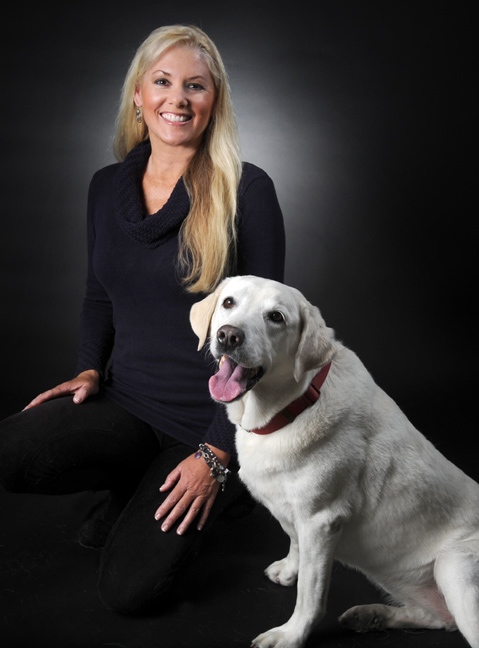
“It’s such a simple idea, but it has such profound results,” said Karen Lee Stevens of Animals + Reading = Fun! (ARF!), a program that brings therapy dogs to schools and libraries where children practice reading to them. “We help kids to get excited about reading, and because they are reading to a dog, a nonjudgmental listener, they get to practice and they are getting better,” she said.
ARF! falls under the umbrella of programs created by Stevens’s nonprofit All for Animals, which the native Santa Barbaran began as a monthly email in 1997 as a way to inform people of the mistreatment of animals. Inspired by her “soul kitty,” which she found stray in the rain outside a warehouse in Goleta, Stevens said, “I knew I had to do something. I started writing a newsletter and had at one point 6,000 people on the email list. It just grew and grew.”
Stevens’s organization continued to burgeon. In 2002, All for Animals incorporated as a full-fledged nonprofit; more than eight years ago, volunteers began going into area schools, teaching humane education to the youth. Two years ago, Stevens created the ARF! reading outreach, pairing with the Santa Barbara Public Library. “Our pilot program consisted of six teams for a 13-week program. It was a phenomenal success,” she said. “We actually tracked the children’s reading scores — reading fluency and comprehension — and they’ve made some remarkable gains …. It’s a two-pronged [program]: The kids get to practice their reading skills with a nonjudgmental listener, and they learn empathy and compassion for animals.” ARF! now consists of 25 certified teams, all taught by an All for Animals professional dog trainer, and are according to national therapy-dog standards.
“My life has really revolved around animals and reading — they have always been two of my favorite things,” Stevens explained. “One of the reasons why it’s so meaningful for me to go back into the Santa Barbara Public Library is because I was there every Saturday morning as a child.”
The Brittinghams: Philanthropic Family
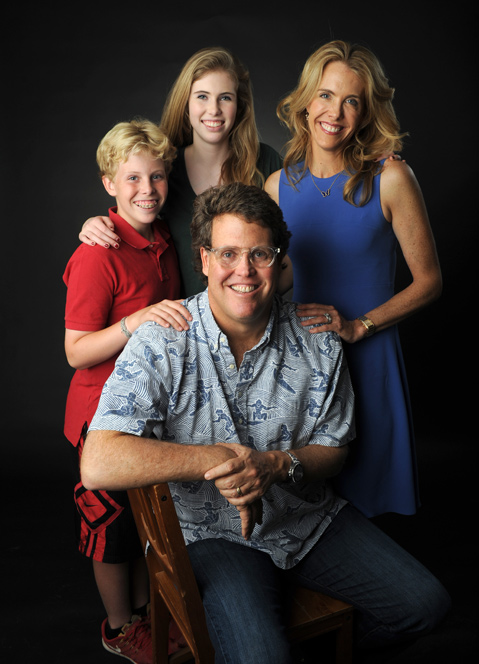
The most conspicuous evidence of Scott Brittingham’s role in Santa Barbara’s civic affairs is the 75-pound bronze statue of Grateful Dead guitar guru Jerry Garcia’s hand in the glen at the Santa Barbara Bowl. Brittingham, a die-hard Deadhead who has personally attended more than 100 concerts, helped raise $40 million to make the Bowl what it is today. Beyond that, Brittingham, now 53, has directed his philanthropic focus to other musical ventures, such as Santa Barbara’s annual New Noise extravaganza and the Notes for Notes program that puts professional-grade musical studios and equipment within the grasp of kids. “I go where I feel I can add value,” Brittingham explained.
Born in Delaware and raised in Los Angeles, Brittingham is the scion of two seriously high-profile families in which giving back was the expectation. Brittingham moved to Santa Barbara in 1996 and has made a point of exceeding expectations. The currency in trade for any philanthropist, he said, is “time, talent, and treasure.” When he started, Brittingham said, he mostly had time. He threw himself into organizations like the Children’s Creative Project and found himself directing kid-laden buses to their proper parking spaces during school field trips. He didn’t shy away from grunt work; he embraced it. “Less noblesse,” he explained, “but more oblige,” riffing on the old saw “noblesse oblige.”
Since then, Brittingham has clearly demonstrated talent and amassed some treasure, as well. Today, he and his wife are significant players in the charity world, using the Brittingham Family Foundation as their vehicle. “We like kids and mothers,” he said. “We like schools and students.” In that vein, the foundation has given to the Santa Barbara Birth Center and Women’s Services at Cottage Hospital. Likewise, he’s worked with the Santa Barbara Scholarship Foundation to provide scholarships to aspiring nurses hoping to attend Cal State Channel Islands. A typical Cottage nurse from out of town stays on the job about five years, Brittingham pointed out. Homegrown nurses, by contrast, last nearly five times longer. “You have to invest in people already here,” he said.
Steven Sharpe: Community Organizer
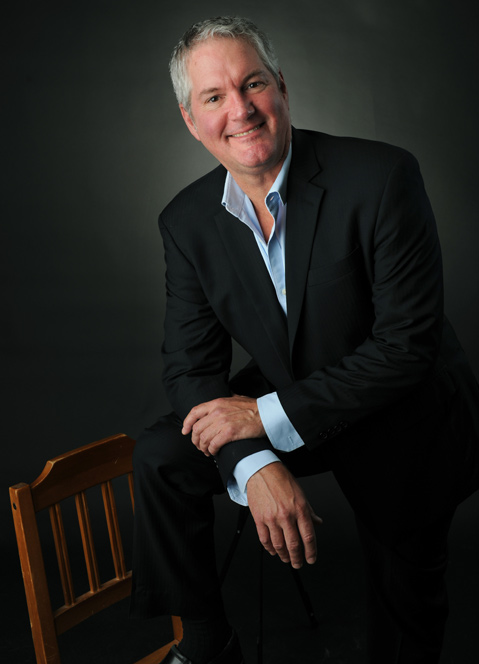
Steven Sharpe, the general director of Opera Santa Barbara, has a deep commitment to fostering community that embraces three distinct areas: nature, culture, and health. Born and raised in Santa Barbara and educated at Santa Barbara High and the University of California, Irvine, as well as in New York City and in France, Sharpe has never stopped giving back or finding new ways to do so. In fact, what makes his career in the nonprofit sector so interesting is how he intertwines all his interests in a single vision of a better world.
From his early days volunteering at the Botanic Garden, where Sharpe established the nature camp for kids, he has connected people with the outdoors, something he still does today with his Sundays at Seven hiking group. The passion for cycling that led Sharpe to ride from New York to Santa Barbara in 1989 also sparked Transportation Awareness Day and led to several ongoing commitments, including being involved with the Paradise Pit stop, teaching spinning and yoga at Santa Barbara Athletic Club, and training cyclists for the AIDS ride.
As Tom Rollerson’s first full-time employee at the Dream Foundation, Sharpe quickly learned the ropes of high-level philanthropy and proved himself an able administrator and a first-rate organizer. Sharpe founded the Heart + Sole AIDS Walk; he was executive director of the Solstice Parade from 1993-1995 and then artistic director of the Solstice Parade in 2002. Since taking the top spot at Opera Santa Barbara, Sharpe has revolutionized the presentation of opera in this city. From nature to culture and health and fitness to high art, Steven Sharpe can do it all.
Paula Jimenez: Lazy Acres’ Friendly Face
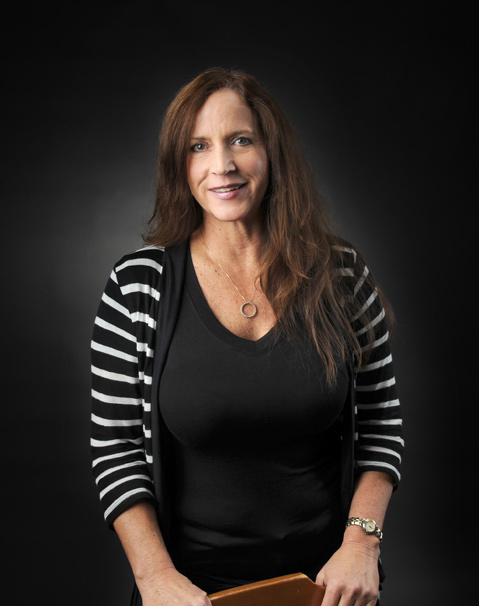
A perfectly timed smile coupled with some helpful knowledge can go a long way toward turning around an otherwise rough day. Such is the superpower of Paula Jimenez, a longtime service manager at Lazy Acres grocery store on the Mesa. Since the health-forward grocer opened in March 1991, Jimenez has been there, doing everything from bagging groceries and cleaning up spilled food to smoothing over disgruntled shoppers and counting out cash registers at the start of the day. Day in and day out for almost 25 years, her calm and warm demeanor has been a staple at the bustling store. “I like to make people smile,” explained Jimenez. “I try really hard to do it every day, even when I’m not having the best day myself. It isn’t always easy, but I try because you never know what someone is going through. You just have to be patient.”
Originally from New Jersey, Jimenez moved to Santa Barbara at a young age with her parents and her three brothers and has since gone on to raise her own three children here in the community she loves so much. Her time at Lazy Acres has spanned ownership changes, countless fads in the food industry, and even turned into a family affair in recent years with both her husband and one of her sons picking up shifts at the store.
During the interview for this story, sitting at a table near Lazy Acres’ front door, Jimenez was passed by at least a half dozen people in the span of 20 minutes who knew her despite her lack of uniform and name tag, all of them greeting her kindly like an old friend. “I can’t believe it,” said the Goleta resident of her Local Hero honor. “It really makes me feel good to know that people notice and appreciate what I do.”
Arnette Zerbe: Butterfly Beach Caretaker

Every other day for the past 12 years, Arnette Zerbe has been waking up early and heading to Butterfly Beach with a couple of trash bags and a garbage scooper in tow. A Wisconsin native who moved to the area with her husband, Anthony, just after the 1969 oil spill, this grandmother has been a one-woman beach-cleaning crew at arguably the most sought-after stretch of sand on the Santa Barbara/Montecito coast. “This is such an exquisite place,” said Zerbe. “It’s not too hard to care about it.”
A force of nature with energy levels well beyond that of people half her age, Zerbe has expanded her cleanup program over the years to now include the curb and sidewalk above the beach all the way down to the water’s edge. “I realized that what is up there will always end up down on the sand, so I decided to go to the source,” explained Zerbe of her bagful of broken glass and cigarette butts, collected each morning before she even makes it to the beach, where she will invariably fill up a bag before her couple-hour routine is done.
She doesn’t view her work as a high-and-mighty altruistic undertaking but rather as a simple product of being a good neighbor. Informed years ago by a classmate at Santa Barbara City College Continuing Education that her beloved Butterfly (she and her husband live a short walk away) was often one of the dirtiest beaches around, Zerbe was moved to action. “It’s my beach. I live there, so it’s up to me to do something about it,” she said. “Whenever you see a clean beach, it isn’t the city or the county that are doing it; it is the community and the people who care about the beach that are doing the work. Every day when I’m done, I know I am leaving the place a little better than when I found it, and that is such a high for me. Believe me, I get more out of this than I put in.”
Ed France: Bicycle Advocate
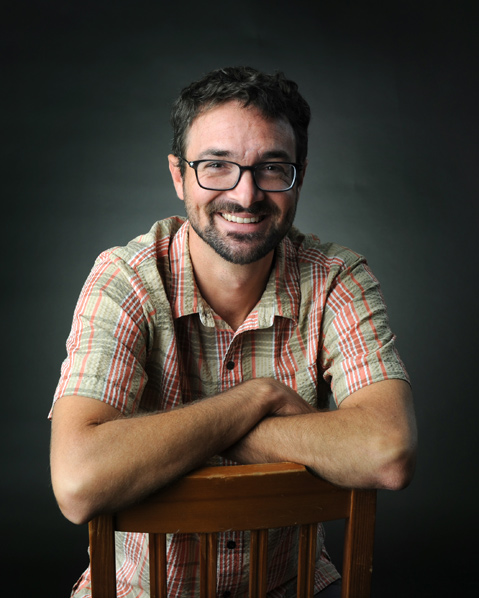
When Ed France quit his job with the City of Santa Barbara at the age of 24, he said he was the perfect combination of disillusioned, fired up, and — having saved $15,000 — capitalized. A former employee at the Associated Students bike shop at UCSB and a founding member of the California Student Sustainability Coalition, he was ready to sacrifice the career ladder to follow his dream of opening a DIY bike shop in Santa Barbara.
Bici Centro started out in a storage closet at La Casa de la Raza and now has its own Haley Street building. The nonprofit shop has since merged with the S.B. Bicycle Coalition, which France heads, and it’s become ground zero for programming such as a countywide bicycle education program and the monthlong CycleMAYnia celebration. France explained that the shop is so crucial to the Coalition as a whole because it brings staff and volunteers “face-to-face” with community members and their needs. He is especially proud that Bici Centro is a bilingual center and that much of its outreach extends beyond the organic-food-eating, ecologically sustainable, flannel-wearing demographic.
Take for instance the Iluminando la Noche program in which 1,400 bike lights are distributed in the week before the fall time change to a largely low-income Spanish-speaking population that commutes by bike by necessity, not choice. While offering lights to these cyclists, Coalition volunteers also collect their input on safety conditions, and survey them on their knowledge of vehicular laws. Hesitant to take credit, France pointed out that the effort was first spearheaded by Carmen Lozano, former chair of the Spanish Language Outreach Committee. The best thing about the Coalition, France said, is that “we have a great team and we run a flexible organization. If someone has an idea, we can roll with it.”
Beverly Schwartzberg: Literacy Tutor
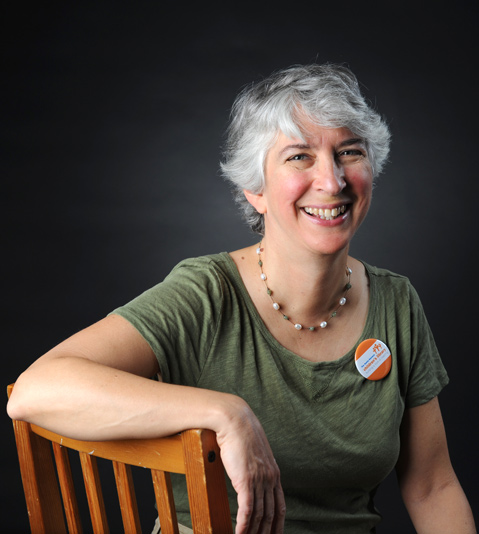
If reading and writing are magical powers, Beverly Schwartzberg easily ranks as one of Santa Barbara’s leading sorceresses. For the past 11 years, Schwartzberg has been running the adult literacy program out of the downtown library, personally training close to 750 volunteer tutors in that time.
For Schwartzberg, reading and writing have always been second nature, having grown up in the college town of Amherst, Massachusetts, the daughter of two college professors. In fact, in 1993, she appeared as a contestant on television’s Jeopardy and did well enough that she still ranks in the Jeopardy Hall of Fame. Schwartzberg came of age both politically and culturally in the 1970s, a time when adult literacy was a high-profile concern. She became an adult literacy tutor her first year out of college; when she moved to California in 1992 to attend graduate school, she jumped back in.
Literacy challenges afflict all walks of life. “The people we tutor are the most demographically diverse group you can imagine,” she said. “We have people who just arrived in the country, we have some of California’s first families, and we have people whose ancestors came over on the Mayflower.” Most, she said, have some literacy skills. Only a few are outright illiterate. Thirty years ago, most were men. Today, it’s just the opposite.
Schwartzberg recruits and trains volunteer tutors; currently, there are 180, all of whom have received nine hours of training. The next trick is to pair that tutor with the right student. The objective, she said, is not to have people reading War and Peace, but to achieve the goals they set out for themselves. The key is to create a place they feel safe going to and even safer coming back. “It doesn’t always happen the first time,” Schwartzberg said.
While adult literacy is one of the few genuinely bipartisan issues that warring political factions can agree upon — “It’s the cheapest education investment you can make,” she said — the state legislature pulled the plug on Santa Barbara’s adult literacy program during the depths of the Recession. City Hall helped save the program from elimination, and Schwartzberg quietly worked to educate decision makers about the benefits of her program. “When I started out, I was wanted to change someone else’s life,” she said. “But really it’s been my life that’s gotten changed.”
Sharon Hoshida: Outsider on the Inside
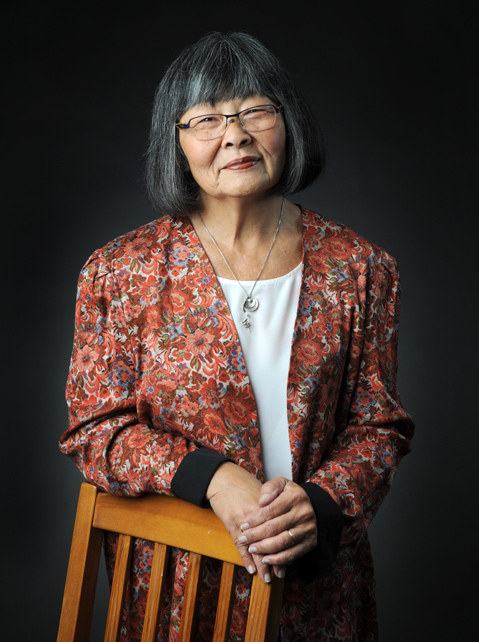
Everything Sharon Hoshida touches turns a little bit more righteous. From decades of empowering minorities and women on the UCSB campus to promoting feminism on the Santa Barbara Women’s Political Committee to the founding of the 10-year-old Women’s Literary Festival and one-year-old Granada Books on State Street, Hoshida embodies community activism, choosing to live her life for the enrichment of others.
Hoshida was born in Salt Lake City, and her family saved up $100 and came west, eventually settling in Simi Valley, where they were, as always, one of the only Japanese families around. “I’ve always felt like an outsider on the inside,” said Hoshida, who came to UCSB in 1965 but dropped out in 1967. “That’s been the theme of my life.”
Her progressive values of questioning authority and protesting the Vietnam (and every subsequent) War were cemented while on staff at Moorpark College. Returning to UCSB for a photography job in 1971, Hoshida started associations for minority and Asian-American faculty/staff. As program director for the UCSB Women’s Center (and, briefly, the MultiCultural Center), she mentored hundreds of students and helped shed light on women and minorities who were publishing books, getting tenure, and otherwise excelling. Off-campus, Hoshida led the anti-Iraq War protests on State Street and was part of the five-person delegation that convinced Congressmember Lois Capps to vote against the war. She cofounded the Women’s Literary Fest in 2006, and upon retirement as director of the Women’s Center in 2008, Hoshida cofounded Granada Books to bring more literary life to downtown.
“Santa Barbara has been a very nurturing environment to be a community activist,” said Hoshida. “In my sunset years in our community, I’m very happy to be creating this space. The community is paying us back.”
Bill Felstiner: Our Man in Chad
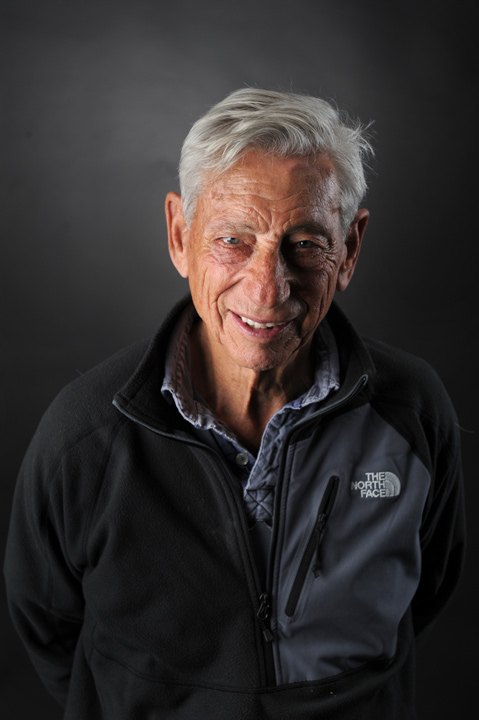
Despite living a very global life — Korean War; development aid work in Turkey and India in the 1960s; law and sociology professor stints at Yale, Oxford, UCLA, UCSB, and elsewhere — Bill Felstiner knew little about Chad until he attended a spring 2007 seminar on Darfur up the road from his house at La Casa de Maria. An aid worker there told the 40-year-plus Santa Barbara resident about the crisis in the southern part of the country, and by September, Felstiner was on the ground amid the 70,000 refugees from the adjacent, oft-warring Central African Republic (CAR), asking various aid organizations what they needed most.
“We decided we ought to do something fast,” said Felstiner, so they raised enough money to send a shipment of wheelchair-tricycles to help the otherwise immobile refugees. “By January, we were in business, and it’s been growing ever since.” So far, Felstiner’s Chad Relief Foundation has raised $825,000 (mostly from generous Santa Barbarans), made 10 visits, and done everything from building schools, housing, and soccer fields to installing solar panels on health centers to distributing medicines (from Direct Relief) and vitamins (from Vitamin Angels) in five different refugee camps.
The challenges are daunting, but he knows his work is saving lives, especially as new CAR battles push the refugee population toward 100,000. “Chad is one of the poorest, most awful places on the face of the Earth, one of only four countries in the world where life expectancy has decreased in the first 10 years of this century,” said Felstiner. “We try to make these people’s lives a little more tolerable.”
Monica Spear: Strong, Smart, and Bold Leader

Monica Spear is not just the face of Girls Inc.; she’s also its heart and soul. Within a few minutes of speaking with Spear, it’s apparent that behind her soft and quiet demeanor is serious determination for the program, which seeks to ensure all girls have the opportunity to be empowered — to be strong, smart, and bold.
Growing up in the Bay Area, Spear was social and energetic. A natural-born leader, she always strove to be the one who sold the most cookies in Girl Scouts. “Being passionate about what you do is important,” she said. Spear arrived in Santa Barbara in 1988 to attend UCSB, where she earned a degree in psychology. Soon after graduation, she volunteered at Girls Inc. before landing a gig in its fundraising department. December 1 will be her 20-year anniversary with the organization.
Walking through the two Santa Barbara centers, Spear is often approached by a girl who runs up to hug her — breaking from playing basketball or practicing literacy or rehearsing in a play. She effortlessly relates with so many of the 1,200 girls who are served through the organization each year. “Anyone who has met Monica knows she is a lifelong advocate for the empowerment of young girls,” said Christi Sulzbach, chair of the Girls Inc. board of directors.
Most Santa Barbarans have probably seen Spear’s big smile around town as she continuously looks for ways to increase the visibility of the program. “Space-wise, we’re bursting at the seams,” Spear said, adding that her goal is to reach 30 percent more girls and raise 40 percent more revenue next year.
“She has a very obvious connection with the girls,” Sulzbach said. And while Girls Inc. seeks to provide life skills and empowerment to the youth, perhaps most importantly, “The girls have a lot of fun,” Sulzbach said.
Miguel Meraz: Angel to the Elderly
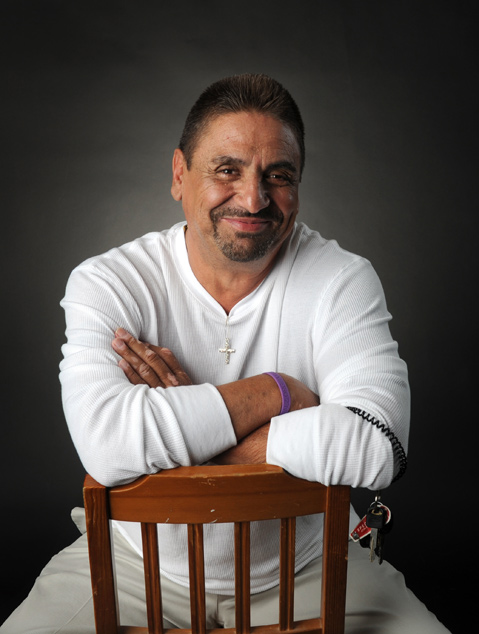
When Miguel Meraz accepted a job with the Friendship Center, he hadn’t worked with seniors before. But, he said, he was “tight” with his grandma and decided he would treat his patients how he treated her. Now, 24 years later, Meraz has made it not only his career but his mission to make the men and women he works with every day — most of whom have Alzheimer’s or other forms of dementia — laugh. “That’s genuine,” he said.
At the Friendship Center — a decades-old daytime institution offering seniors companionship, activities, and two meals — Meraz works as a program specialist and driver, picking the folks up in the morning and driving them to the center. Calling dementia a “terrible, tragic disease,” Meraz acknowledged the patience required for the job and the hurt that invariably comes with working with the elderly. “When they do pass away, it hits you in the pit of your stomach,” he said. “You reassure yourself that — whatever you believe in, whatever your faith is — they’re finally resting.” He bonds with them, Meraz said, and enjoys hearing their stories. One patient, a Vietnam War veteran, always receives Meraz’s salute, a small gesture, and “his face lights up,” Meraz said, smiling.
A Santa Barbara High School alum, Meraz, 55, is married and is a dad to three kids, one of whom is about to make him a grandpa for the first time. With his grandson, “first on my list, just in case,” Meraz said — his own face lighting up at the future — is to teach the boy how to treat his own grandparents.
Joe Coito: S.B. Triathlon’s World-Class Director
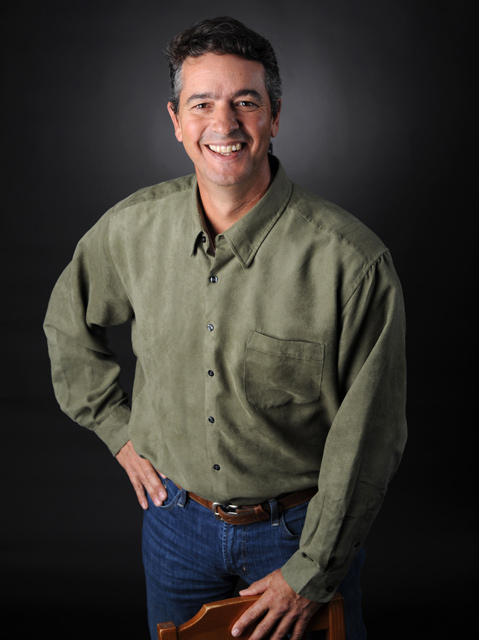
Heroes abound in Joe Coito’s world along the Santa Barbara coastline every summer: “The kids who conquer their fear early in the morning by jumping through the waves … the moms and dads who take health so seriously they make a lifestyle change … the volunteers who stand in the heat on Highway 192 for six hours handing out water … those are heroes to me.”
Coito, an outdoor enthusiast with a background in finance, has been in the hero-making business for the past 20 years as director of the Santa Barbara Triathlon. “I’m not a triathlete myself,” he said, “but I recognize that Santa Barbara is the perfect community for the triathlon.” He has expanded the late-August event from a single swim-bike-run race to a two-day festival that attracts up to 2,000 participants, from beginners to world-class athletes.
The long course (mile swim, 34-mile bike ride, 10-mile run) on the first day is the marquee event, but the sprint course the next day has a populist flavor. Options include an open coed race, a “just for fun” division, a family division (parents and kids together), and a women-only race.
Dawn Schroeder and Jamie Allison, founders of Moms in Motion training program, encouraged Coito to start the women’s event. “It’s such an important piece of the triathlon,” Schroeder said. “Joe tries to make each event better than the last. The longevity says so much about him. I hope he does it for 20 more years.”
The triathlon has a significant charitable component. “We’ve raised nearly $500,000 for nonprofit organizations,” Coito said. “I used to randomly select the beneficiary, but now Montecito Bank & Trust asks the community to vote on it.” The 2014 triathlon raised almost $15,000 for Girls Inc. of Greater Santa Barbara.
Tragedy befell the triathlon in 2008 when legendary athlete Barbara Warren died in a crash on the bicycle course. Coito created the annual Barbara Warren Community Spirit Award. “The plaque is hanging next to the East Beach Grill,” Coito said. “I don’t sweep things under the rug.”
Jason Prystowsky: Doctor Without Ego
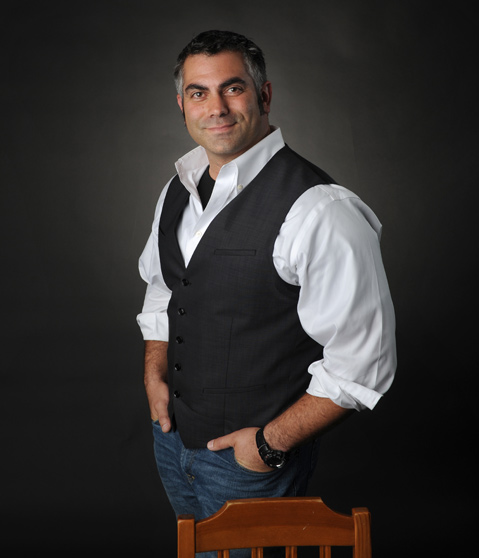
If you’re going to call Dr. Jason Prystowsky a hero, do it behind his back. “I’m not a hero,” said the medical director for Doctors Without Walls – Santa Barbara Street Medicine (DWW-SBSM). “I’ve just had the opportunity to work with amazing doctors, students, and volunteers. And when what should be normal becomes heroic, that’s a criticism of society.” A full-time emergency room physician, Prystowsky has hopscotched all over the globe to treat everything from gunshot wounds in Sudan to tetanus in Haiti, but he said there are more than enough problems on Santa Barbara’s streets to keep him and his teams busy. “There’s an extraordinary need here,” he explained, pointing to rampant poverty, homelessness, and mental-health issues. “That’s the big secret in the room.”
DWW-SBSM and Prystowsky put on weekly clinics at parks and shelters and coordinates with a long roster of area agencies to help hundreds of homeless and working poor with their health problems. Many of their patients are employed, tax-paying citizens, Prystowsky said, and many others are simply thankful for someone to confide in. “That empowers them,” he said. “That gives them humanity.”
Especially appreciative of his student physicians, Prystowsky said the nonprofit is training the next generation of health care leaders who will take the skills they learn in Santa Barbara — pinpointing a need, establishing trust, and practicing responsible medicine — across any border. “Providing medical care under a palm tree in Santa Barbara is the same as under a mango tree in West Africa,” he said.
Of his tireless devotion to his job, volunteer work, and teaching, Prystowsky said it’s the price he pays — what anyone should pay — for living in such relative comfort. “Part of the joy of living in a bubble of aesthetic bliss is giving back,” he said. And no matter how nice it seems, there’s always progress to be made, especially because “the people who are most vulnerable are the ones who have to jump through the most hoops to get care.” Prystowsky encouraged anyone curious about contributing their time or money to drop DWW-SBSM a line. “It’s easy to give back,” he said. “Come join us.”
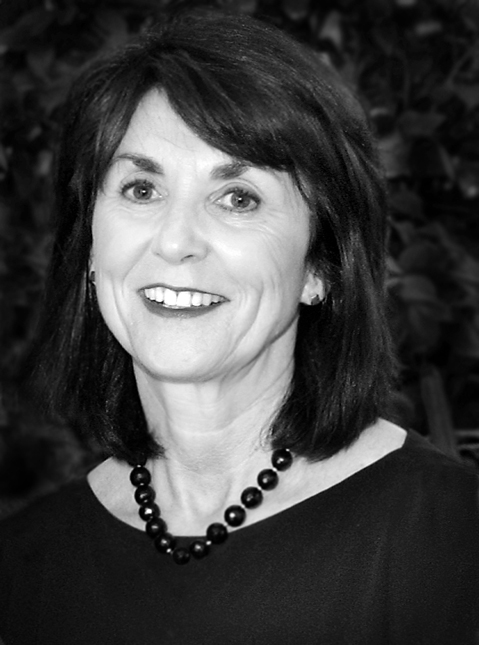
Meredith Scott: Community Visionary and Children’s Champion
Soft-spoken, selfless, and unassuming, Meredith Scott may speak quietly, but her efforts as a community leader shout volumes about her passion for working on behalf of disadvantaged children and providing equal footing to area families.
Where need existed, she helped develop solutions: in the founding of the Hope School District Educational Foundation and the Women’s Fund and in the creation of successful programs such as Mock City (Assistance League) and Wine Jewelry Chocolate (Child Abuse Listening Mediation, or CALM). She has also held many leadership roles at CALM, including president of its board of directors. “Meredith Scott has been CALM’s personal superhero for nearly 20 years,” said Cecilia Rodriguez, its executive director.
Scott led the San Marcos High School PTSA while her own kids, Kelly and Jordan, attended there, and her collaborative community work has also touched Court Appointed Special Advocates for Youth (CASA), Domestic Violence Solutions (DVS), Storyteller Children’s Center, and many more.
She gave life to the first Santa Barbara chapter of the California Youth Connection — an intense two-year creation process — which enables foster youth to find their own identity and voice locally and in Sacramento.
And when diagnosed with ALS, Scott, after initially pausing to come to grips with her new reality, reacted in characteristic fashion — she started Beating the Odds, a pre-Ice Bucket Challenge initiative, with family and friends. Three fundraisers in less than a year — along with other tributes in her name — have raised awareness of ALS and more than $100,000 to advance critical research at Cedars-Sinai Medical Center. Scott’s dream is finding a cure for this devastating disease that will benefit other families, even if it’s too late to help her own.
Scott’s inspirational, immeasurable philanthropic impact and deep reach into the Santa Barbara community is felt by the many charitable organizations, programs, families, and children whose lives she continues to positively impact.
Felice Fernandez: Volunteer Extraordinaire
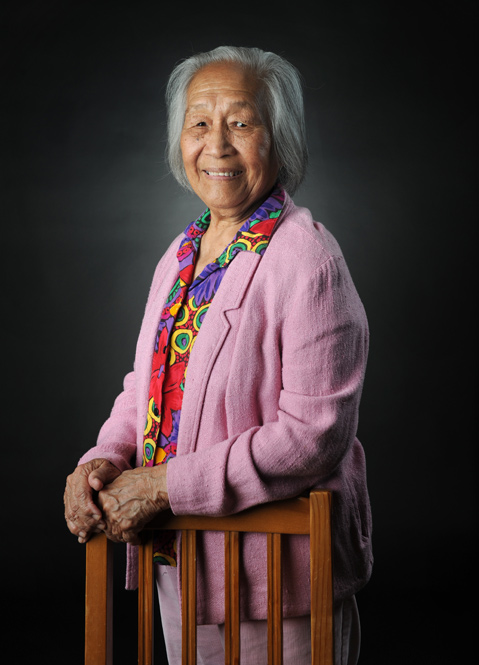
When Felice Fernandez retired as a Franklin School teacher on Santa Barbara’s Eastside in 1995, she went right back to work as a teacher’s aide. And at 86, Philippines-born Felice is still in the classroom. “I love working with kids,” she told The Santa Barbara Independent. Every Wednesday when she leaves school, Fernandez heads off to volunteer at Sarah House hospice, which offers end-of-life care for low-income and homeless people. There she helps prepare and serve dinner to residents, cleans up, and also serves hugs. “It’s really no big deal,” she said of her volunteering. “I’m just one of many who volunteer in the community.”
“She’s so deserving” of Local Heroes honors, said Debbie McQuade, Sarah House director. “She is one of the most intelligent, well-educated, funny people I know,” said fellow volunteer Linda Proud. Felice is also famous for her near-encyclopedic knowledge of classical and pop music, movies, and books. Proud said, “To me, she just epitomizes the wonderful diversity and character of the people of Santa Barbara.”
Ed Holdren: Youth Sports Advocate

Ed Holdren hates to see kids getting beaten down and discouraged. During his 21 years as a coach in the Youth Football League, he taught hundreds of players about sportsmanship. The better they were, the stronger the lessons. “I didn’t want to run up the score,” he said. “I’d let linemen carry the ball. I’d punt on first down. It bugs me when a coach lets his team pile on.”
Holdren also coached Little League baseball, and basketball was becoming popular with the kids when his three sons were growing up. He was a founder of the Goleta Youth Basketball Association. “The emphasis had been on all-star traveling teams,” he said. “We wanted a quality program for everyday boys and girls. We had 150 kids the first year. It grew to 250 and then 400 kids. We played at the old armory, St. Mary’s, Dos Pueblos, Robertson Gym, wherever we could find a court.”
That led Holdren, who was in the construction business, to take on the most daunting project of his life — building a complex that became the Page Youth Center on Hollister Avenue. “It was a huge endeavor,” he said. “We raised $2 million. We borrowed $400,000. It’s really hard to raise money after the fact. For six years, we had bingo nights and put on everything from professional wrestling to cat shows.”
Holdren put together a board including Vaughn Wipf, Tom Caesar, and other community-minded individuals. “Ed persevered the most in time and effort,” Wipf said. “I’ll always remember the night he called and said we finally got the Page Center paid for.” By the time the gym was built, Holdren’s own sons were too old to play in the youth leagues. “Most of the original boardmembers’ kids didn’t get to play there,” he said.
“My dad is not a touchy-feely guy,” said Dare Holdren, his middle son. “But his dedication to kids is amazing. I’m always hearing people tell me about my dad as their coach.”
Ed and Dare Holdren, a San Marcos High teacher, were father-and-son assistant coaches of the Royals’ freshman football team this past season. “We beat Santa Barbara in our last game,” Ed said. “It was a nice victory” — accomplished, of course, without running up the score.
Michael Morgan: Odyssey of Empowerment
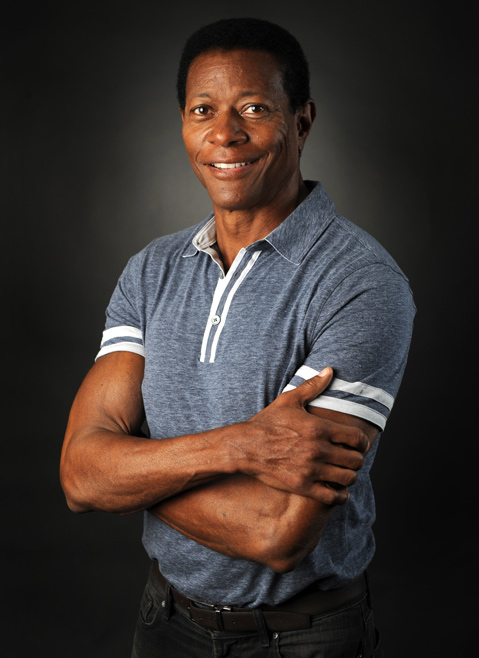
Every summer since 2011, a vanload of troubled youth from Los Prietos Boys Camp has been delivered to a special UCSB theater class taught by Michael Morgan. They often arrive quiet, defensive, and skeptical. But after six intensive weeks of writing and rehearsing a personal adaptation of The Odyssey in collaboration with UCSB students, they emerge with new self-worth, their creativity and intelligence validated by their own hard work and a final performance in front of friends and family. “They come out of it strong and pretty heroic,” said Morgan, who grew up in Harlem and teaches voice and speech at the university. “It’s a real sense of accomplishment.”
Inspired by the film Shakespeare Behind Bars and alarmed by America’s flailing approach to juvenile justice, Morgan created the Odyssey Project to give a segment of Santa Barbara society often relegated to the sidelines a chance to take center stage. And Homer’s epic, with its male-centric themes of strength and vigilance, is the perfect vehicle for the young men to reflect on their lives upon release from custody — what it means to return to their own personal Ithaca. The program handpicks six to eight qualifying campers between 16 and 18 years old — sometimes from rival gangs — and often features dance, drums, and rap. As Morgan explained, the stage is a level, democratic playing field that builds trust among everyone involved.
With an eye on reducing the recidivism rate among campers, Morgan is developing follow-up outreach mechanisms to Odyssey Project graduates and their families and is producing a documentary on the empowering approach, which has garnered no shortage of praise, awards, and grants. “We’re seeing how theater and social activism intersect to move the dial forward,” he said.
And though the project and the film would certainly benefit from more funding and community support, the impact so far can’t be denied. “It’s one of the most rewarding experiences I’ve had as a teacher,” he said. “I’m really humbled by it.”
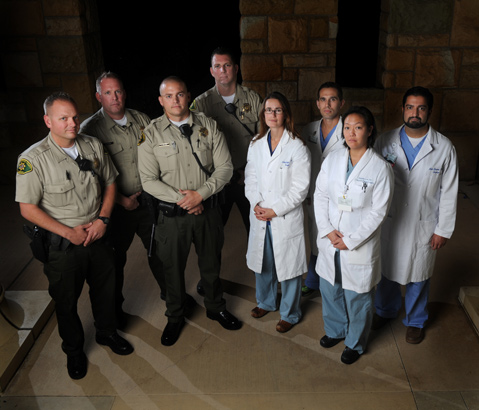
Isla Vista First Responders: Grace Under Fire
For this community, May 23, 2014, was a night where six young lives were cut far too short. But it was also a night when several men and women — people whose jobs require heroism every day — displayed bravery and humanity that prevented further tragedy. From the Sheriff’s deputies who risked their lives by running into gunfire to stop the shooter and administer first aid to the dispatchers who provided calm to hundreds of frantic, frightened callers to the emergency room staff who cared for the seven students injured, the first responders — including the firefighters, ambulance personnel, and paramedics — to the Isla Vista murders epitomize our local heroes. (Also a special thanks to the Coroner’s Office for dealing with a circumstance no one would envy.)
For whatever reason that Friday night, the dispatch center team — which usually includes six people per weekend shift — was overstaffed, said supervisor Susan Farley, with eight employees on hand. The night had been fairly routine until approximately 9:30 p.m., when the first call came in reporting shots fired in Isla Vista’s loop. Farley thought at first that it might just be fireworks. But then the calls flooded in. “Holy moly,” she remembered thinking, “This is real.”
Looking back, Farley said it was “a very short but stressful time,” commending the eight dispatchers for their teamwork in fielding 121 calls in 33 minutes — four times their typical volume — that were a mix of chaotic Isla Vista–related reports and normal emergency requests. The dispatchers, like others, Farley said, had questions. “A lot of the confusion that the community had — it was all in here, too,” she said. “Why would someone do this? How could this happen? There were a lot of those discussions going on immediately after, but we still had to answer the phone.”
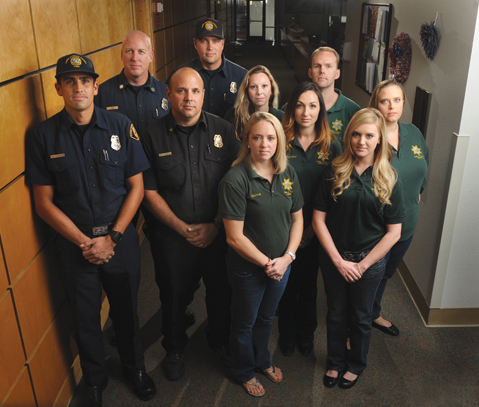
Around 9 p.m. on Friday, Dr. Pam Lee — the on-call trauma surgeon for Cottage Hospital that night — remembered thinking how slow the night had been so far. About 30 minutes later when she heard reports of a shooting in Isla Vista, she thought it might just be a BB gun. But when the words “mass casualty” came in, she and about 30 other trauma-team staff — from another surgeon, medical residents, and nurses to anesthesiologists and operating-room personnel — “came out of the woodwork” to help the seven injured. “The team was fantastic. I said this before when it first happened, but we don’t see this kind of trauma very often here,” Lee said, noting the “emotional trauma” of the situation that accompanied the physical kind.
In the months since, Lee said, one of the victims — five suffered gunshot wounds, two were injured by the shooter’s car — reached out to her. Lee grabbed coffee with the woman and her mom. “It was good just seeing her again and talking with her,” Lee said. “It’s good to see that she’s doing well. We always love seeing that.”



